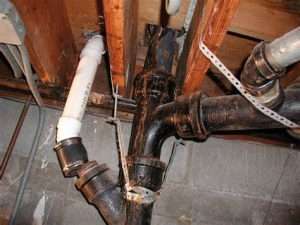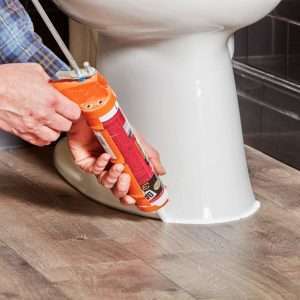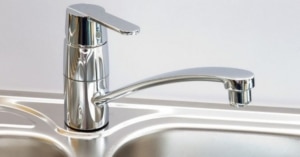Issues with PEX Plumbing:
Common Problems, Prevention, and Risks
Pex plumbing, a popular choice for homeowners and contractors, is known for its flexibility, cost-effectiveness, and ease of installation. But like all good things, it isn’t without its problems. Issues with pex plumbing can sometimes arise, creating headaches for homeowners. This article will explore the common issues encountered with pex plumbing, from potential health risks to durability concerns, and offer solutions to these problems.
What is PEX Plumbing?
PEX plumbing is a modern and versatile plumbing system that has gained popularity in recent years. PEX stands for cross-linked polyethylene, which is a type of plastic material used to create the pipes. Unlike traditional plumbing systems that use copper or galvanized pipes, PEX plumbing offers numerous advantages in terms of flexibility, durability, and ease of installation. In this section, we will explore the ins and outs of PEX plumbing, including its benefits and potential drawbacks.
The Advantages of PEX Plumbing
PEX plumbing offers several advantages over traditional plumbing systems, making it an attractive option for homeowners and professionals alike. Here are some of the key benefits of using PEX pipes:
- Flexibility: PEX pipes are highly flexible, allowing for easy installation even in tight spaces or around obstacles. This flexibility also reduces the need for additional fittings and connectors, minimizing the risk of leaks and potential points of failure.
- Durability: PEX pipes are resistant to corrosion, scale buildup, and freeze damage. They can withstand high temperatures and extreme pressure, making them suitable for both hot and cold water applications. These pipes also have a long lifespan, often exceeding 50 years.
- Cost-effective: PEX plumbing systems are generally more affordable than traditional plumbing systems. The materials used for PEX pipes are less expensive compared to copper or galvanized pipes. Additionally, the installation process is often quicker and requires fewer specialized tools.
- Improved water flow: PEX pipes have a smoother interior surface compared to traditional pipes, allowing for better water flow and reducing the risk of clogs. This can result in improved water pressure and a more efficient plumbing system overall.
Considerations for PEX Plumbing
While PEX plumbing offers numerous benefits, it is essential to be aware of some potential considerations before deciding to install it in your home. Here are a few things to keep in mind:
- Compatibility: PEX plumbing systems may not be compatible with certain chemicals or substances found in some water supplies. Consult with a professional plumber to determine if PEX is a suitable option based on your specific water conditions.
- UV sensitivity: PEX pipes are sensitive to UV light and should not be exposed to direct sunlight for prolonged periods. If PEX pipes are installed outdoors, they should be properly insulated or protected to prevent UV damage.
- Expansion and contraction: PEX pipes can expand and contract with temperature changes, which may require the use of expansion loops or other fittings to accommodate these movements. Professional installation is key to ensuring proper expansion and contraction without compromising the integrity of the plumbing system.
Advantages of PEX Plumbing
PEX plumbing is becoming increasingly popular in both residential and commercial applications. This versatile and durable piping material offers several advantages over traditional plumbing systems. In this section, we will explore the key benefits of PEX plumbing, including its durability, cost-effectiveness, and easy installation process.
Durability
One of the primary advantages of PEX plumbing is its exceptional durability. PEX pipes are made from a cross-linked polyethylene material that is highly resistant to corrosion, scaling, and pitting. This means that PEX pipes have a longer lifespan compared to other types of plumbing materials.
Unlike metal pipes, PEX is not susceptible to rust or corrosion, making it an ideal choice for areas with aggressive water conditions. Additionally, PEX pipes have excellent freeze resistance, allowing them to expand and contract without bursting during extremely cold temperatures. This durability ensures that your plumbing system remains intact and functional for years to come.
Cost-effectiveness
PEX plumbing offers significant cost savings compared to traditional plumbing systems. Firstly, PEX pipes are more affordable to purchase and install than copper or steel pipes. This cost advantage is especially beneficial for larger plumbing projects where a substantial amount of piping is required.
Furthermore, PEX plumbing reduces the need for additional fittings and connectors due to its flexible nature. The ability to bend and maneuver PEX pipes eliminates the need for complex joint connections, reducing both material and labor costs. Additionally, PEX plumbing requires fewer tools and specialized skills for installation, further contributing to cost savings.
Another cost-saving aspect of PEX plumbing is its energy efficiency. PEX pipes have excellent heat retention properties, minimizing heat loss during hot water transportation. This translates to lower energy bills and increased energy efficiency, making PEX plumbing an environmentally friendly and cost-effective choice.
Easy Installation
PEX plumbing is renowned for its ease of installation, making it a preferred choice for both professional plumbers and DIY enthusiasts. PEX pipes are lightweight and flexible, allowing for quick and hassle-free installation in various applications.
The flexibility of PEX pipes enables them to navigate around obstacles, making installation in tight spaces much more manageable. This eliminates the need for extensive demolition or remodeling, reducing disruption and saving time during installation.
PEX plumbing utilizes a simple connection system, typically using compression or push-fit fittings. These fittings require minimal tools and expertise, making installation straightforward even for inexperienced individuals. The ease of installation also means that repairs and modifications can be carried out with ease, minimizing downtime and inconvenience.
PEX plumbing offers several advantages that make it an excellent choice for both residential and commercial applications. Its durability ensures a long-lasting plumbing system, while its cost-effectiveness provides significant savings in both material and labor expenses. The easy installation process further adds to its appeal, making PEX plumbing a reliable and convenient option for any plumbing project.
Common Issues with PEX Plumbing
PEX plumbing has gained popularity in recent years due to its flexibility, durability, and ease of installation. However, like any plumbing system, it is not without its issues. In this section, we will explore some common problems that homeowners may encounter with PEX plumbing.
Fittings and Connections
One of the primary concerns with PEX plumbing is the fittings and connections used to join the pipes. While PEX pipes are known for their flexibility, the fittings ensure a secure and leak-free connection. Improper installation or the use of low-quality fittings can lead to issues down the line.
To avoid problems with fittings and connections, it is essential to use high-quality fittings and follow the manufacturer’s guidelines during installation. This includes using the appropriate tools and techniques for crimping or securing the fittings onto the PEX pipes. Regular inspections should also be conducted to identify any signs of wear or damage to the fittings.
Leaks
Leaks are another common issue that can arise with PEX plumbing. While PEX pipes are resistant to corrosion and freezing, they are not entirely immune to leaks. Factors such as high water pressure, improper installation, or damage to the pipes can contribute to leaks over time.
To prevent leaks in PEX plumbing, ensure proper installation and use the correct pipe size for the water pressure in your home. Regularly inspecting the pipes for any signs of leaks, such as water stains or mold growth, can help identify issues early on. Promptly addressing any leaks can prevent further damage and costly repairs.
Chemical Sensitivity
PEX pipes can be sensitive to certain chemicals found in water or commonly used plumbing products. When exposed to these chemicals, the PEX material can degrade, leading to potential leaks or other plumbing issues. Some common culprits include chlorine, acidic cleaners, and certain types of pipe dope or thread sealants.
To mitigate chemical sensitivity in PEX plumbing, it is important to be mindful of the products you use. Avoid using harsh chemicals or cleaners that can potentially damage the pipes. When selecting plumbing products, look for those specifically labeled as compatible with PEX plumbing systems.
While PEX plumbing offers numerous advantages, it is important to be aware of the potential issues that may arise. By using high-quality fittings, ensuring proper installation, regularly inspecting for leaks, and being mindful of chemical sensitivity, homeowners can enjoy the benefits of PEX plumbing while minimizing any associated problems.
How to Prevent and Address PEX Plumbing Issues
PEX plumbing has become increasingly popular in recent years due to its affordability, flexibility, and ease of installation. However, like any plumbing system, PEX pipes can face issues if not properly installed and maintained. In this section, we will discuss three key aspects of preventing and addressing PEX plumbing issues: proper installation techniques, regular maintenance and inspections, and addressing leaks and fittings.
Proper Installation Techniques
When it comes to PEX plumbing, proper installation techniques ensure optimal performance and longevity. Here are some important guidelines to follow during installation:
- Secure and Support: PEX pipes should be securely fastened and properly supported to prevent sagging and potential damage. This helps maintain water flow and minimizes stress on the pipes.
- Avoid Excessive Bending: While PEX pipes are flexible, excessive bending can lead to kinks and reduce water flow. Use gradual bends and avoid sharp angles when routing the pipes.
- Use Proper Tools: Invest in high-quality tools specifically designed for PEX plumbing installation. These tools ensure clean cuts, secure connections, and minimize the risk of leaks.
- Maintain Proper Clearances: PEX pipes should be kept away from heat sources, such as hot water pipes or heating equipment, to prevent melting or damage to the pipes.
Regular Maintenance and Inspections
Regular maintenance and inspections help prevent and identify potential issues with PEX plumbing. Here are some maintenance tips to keep in mind:
- Check for Leaks: Regularly inspect visible connections, fittings, and valve areas for any signs of leakage. Address even minor leaks promptly to prevent further damage.
- Monitor Water Pressure: Excessive water pressure can strain PEX pipes and lead to failures. Use a pressure gauge to monitor and maintain the water pressure within the recommended range.
- Prevent Freezing: In colder climates, take necessary precautions to prevent freezing of PEX pipes. Insulate exposed pipes and consider using heat tape in areas prone to freezing.
- Educate Household Members: Inform everyone in your household about the dos and don’ts of PEX plumbing. Avoid using harsh chemicals or clog-causing substances that may damage the pipes.
Addressing Leaks and Fittings
Despite proper installation and regular maintenance, leaks and fittings issues can still occur in PEX plumbing. Here are some steps to take if you encounter such problems:
- Shut Off Water: In case of a leak or fitting failure, immediately shut off the water supply to prevent further damage. Locate the main shut-off valve and turn it off until the issue is resolved.
- Assess the Problem: Identify the source of the leak or fitting issue. Inspect the affected area for any visible damage, loose connections, or faulty fittings.
- Tighten Connections: If the leak is minor or caused by loose fittings, tighten them using the appropriate tools. Be careful not to overtighten, as it may damage the pipes or fittings.
- Replace Damaged Components: If a fitting or pipe is damaged beyond repair, it may need to be replaced. Consult a professional plumber or follow manufacturer guidelines for proper replacement procedures.
Potential Risks of PEX Plumbing
When it comes to plumbing materials, PEX (cross-linked polyethylene) has gained popularity in recent years due to its affordability and ease of installation. However, it’s important to be aware of the potential risks associated with PEX plumbing. In this section, we will explore two key concerns: health risks and the longevity of PEX plumbing systems.
Health Concerns
One of the primary concerns with PEX plumbing is related to potential health risks. PEX pipes are known to release volatile organic compounds (VOCs) into the water supply. These compounds include methyl tertiary butyl ether (MTBE), which has been linked to various health issues such as respiratory problems and even cancer.
PEX pipes have been found to leach chemicals, such as bisphenol A (BPA), into the water. BPA is a known endocrine disruptor and has been associated with hormonal imbalances and developmental issues, particularly in infants and children.
While the levels of VOCs and chemicals leached from PEX pipes are generally within regulatory limits, it’s important to consider the potential long-term effects of exposure. Individuals with compromised immune systems or pre-existing health conditions may be more susceptible to the risks associated with PEX plumbing.
Longevity and Aging
Another concern with PEX plumbing is its longevity and aging. While PEX pipes are touted for their durability, they are still susceptible to damage and degradation over time. Factors such as exposure to sunlight, high temperatures, and harsh chemicals can accelerate the aging process of PEX pipes.
Over time, PEX pipes can become brittle and prone to cracking or leaking. This can lead to costly repairs and water damage if not addressed promptly. Additionally, the fittings used in PEX plumbing systems may degrade over time, potentially causing leaks or failures in the system.
It’s important to note that the lifespan of PEX pipes can vary depending on the quality of the material and the installation methods used. However, compared to other plumbing materials such as copper or PVC, PEX pipes may have a shorter expected lifespan.
In conclusion, while PEX plumbing offers certain advantages, be aware of the potential risks associated with this material. Health concerns related to VOCs and chemical leaching, as well as the longevity and aging of PEX pipes, should be carefully considered when choosing a plumbing system for your home or property. It’s always recommended to consult with a professional plumber to understand the specific risks and benefits of PEX plumbing in your unique situation.
Conclusion
PEX pipes offer numerous benefits such as affordability, flexibility, and resistance to corrosion, they are not without their drawbacks. Some common issues include the potential for leaks due to poor installation practices, the susceptibility to UV damage if exposed to sunlight, and the potential for chemicals and contaminants to leach into the water supply. However, by choosing a reputable plumber with experience in PEX installations, following manufacturer guidelines for installation and usage, and regularly inspecting and maintaining the system, many of these issues can be mitigated or avoided altogether. It is always best to consult with a professional plumber to assess the specific needs and considerations of your plumbing system.









